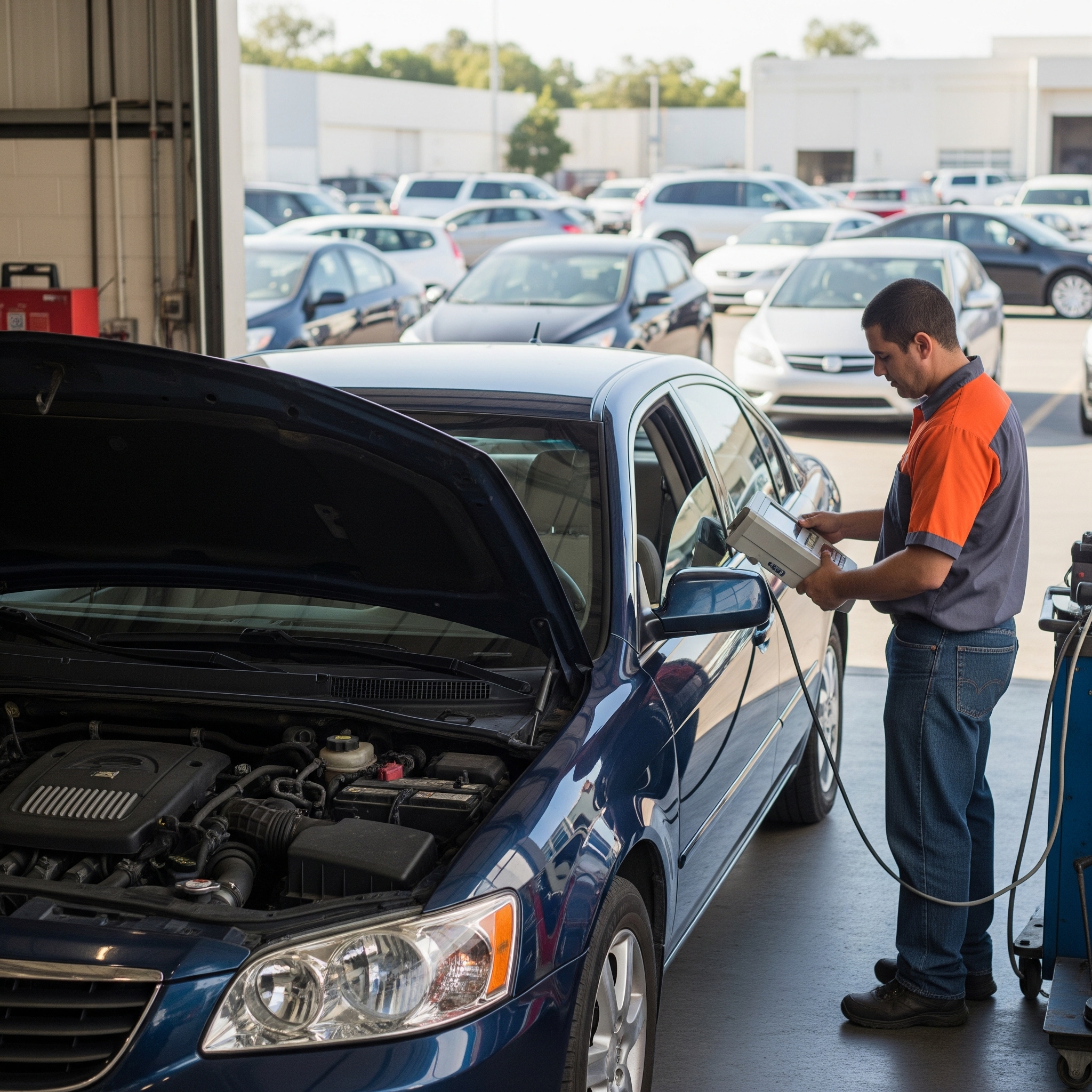The California Smog Check Law: From Choking Haze to Clean Air, A Complete History
Author
Bahram Najafzadeh
Date Published

For millions of Californians, a smog check is a familiar part of life. This biennial ritual is a key step in keeping a vehicle on the road, but it's more than just a regulatory hurdle. It’s a direct link to a decades-long battle against air pollution—a battle that started with a public health crisis and has evolved into a global model for environmental protection.
This article will take you on a journey through the history of California's Smog Check Program, explore its current rules and regulations, and share some surprising facts you might not know.
The Origins: A "Gas Attack" in Los Angeles
The story of the smog check begins not with a law, but with a puzzle. In the 1940s, Los Angeles was a booming metropolis, but a thick, yellow-brown haze often covered the city, causing burning eyes, coughing, and nausea. Residents called it a "gas attack," and it was initially blamed on a local factory. However, even after the factory was shut down, the smog persisted.
It wasn't until the early 1950s that Dr. Arie Haagen-Smit, a Caltech professor, made a groundbreaking discovery. He found that the smog was not from a single source but was a "photochemical" reaction between two key ingredients: hydrocarbons from unburned gasoline and nitrogen oxides from vehicle exhaust. When these pollutants cooked in the California sun, they created the signature smog.
Fun Fact: Dr. Haagen-Smit's research was so revolutionary that it became the scientific foundation for modern air pollution regulations worldwide.
The Rise of Regulation: CARB and the First Tests
Recognizing the automobile as the primary culprit, California became a trailblazer in emissions control.
1966: California established the nation's first tailpipe emissions standards for hydrocarbons and carbon monoxide.
1967: The state created the California Air Resources Board (CARB), a powerful agency that was given the authority to set its own, stricter-than-federal vehicle emissions regulations.
While these early regulations were a start, they were not a comprehensive testing program. Early "smog checks" were often performed at random by the California Highway Patrol during roadside stops. It wasn't until the 1980s that the program we know today was officially born.
The Smog Check Program: From Tailpipe to Computer
The first truly comprehensive "Smog Check" program was implemented in 1984. The program, administered by the Bureau of Automotive Repair (BAR), required periodic inspections for vehicles in high-pollution areas. It was initially met with resistance, with some viewing it as an expensive and unnecessary hassle. However, the program has been a resounding success.
Over the decades, the technology and the rules have evolved:
The 1990s: The Smog Check II Program was launched, introducing more accurate testing methods and a focus on "gross polluting" vehicles.
The 2000s: A major shift occurred. For vehicles model year 2000 and newer, the traditional tailpipe test was largely replaced by a quicker, more efficient computer-based test that reads a vehicle's On-Board Diagnostics (OBD) system. This allowed for more accurate testing of modern, computer-controlled vehicles, including hybrids.
Fun Fact: The Smog Check Program removes hundreds of tons of smog-forming pollutants from California’s air every day.
The Smog Check Today: What You Need to Know
Today, the smog check is a routine part of vehicle ownership in California. Here’s a breakdown of the key rules:
Who Needs a Smog Check?
Biennial Inspection: Most vehicles manufactured in 1976 or later must get a smog check every two years as part of their registration renewal. The DMV will send you a renewal notice indicating if an inspection is due.
Change of Ownership: When a vehicle is sold, the seller is legally responsible for providing the buyer with a valid smog certificate, which must be issued within 90 days of the sale.
Out-of-State Vehicles: Any vehicle being registered for the first time in California from another state must pass a smog check.
Who is Exempt from a Smog Check?
Newer Vehicles: Gasoline-powered vehicles that are eight model years old or newer are exempt from the biennial smog check. Instead, they pay an annual smog abatement fee.
Older Vehicles: Gasoline-powered vehicles from 1975 or older are completely exempt.
Electric and Diesel Vehicles: All-electric vehicles and most diesel vehicles from 1997 or older or with a Gross Vehicle Weight Rating (GVWR) of over 14,000 lbs are exempt.
Family Transfers: A smog check is not required for a vehicle transferred between immediate family members.
Fun Fact: California is home to six of the ten most polluted cities in the United States, which highlights why the state’s emissions standards are so strict.
Beyond the Test: The Smog Check's Impact
The smog check is more than a simple test; it's a powerful tool for environmental progress. The program has been credited with not only cleaning the air but also influencing the global automotive industry. Many of the clean-air technologies we take for granted today—such as catalytic converters and on-board diagnostic computers—were developed and mandated in direct response to California’s pioneering regulations.
By ensuring our vehicles are compliant, we are participating in a legacy of environmental responsibility that started decades ago and continues to shape the future of clean air.

Discover the history of California's smog check program, from its origins in L.A.'s smog crisis to its evolution into a modern emissions testing.

Discover what a smog check is, why it's required, and how to get through the process with ease. Plus, find out how SmogCheck.com helps you.